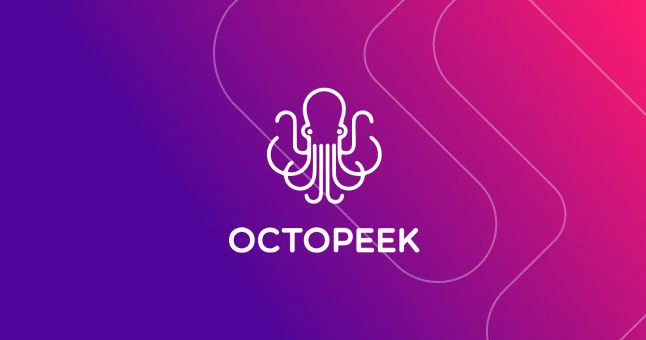Customer Success Story : Octopeek

Who is Octopeek?
Octopeek is an advanced Deeptech company that provides Big Data-based data analytics software and cutting edge AI solutions to underpin businesses in their digital transformation. They aim to facilitate best data-driven decisions to improve productivity and performance for businesses that operate in e-commerce, telecoms, automotive, industry, energy, transport, banking, insurance, luxury, and more.
Since its formation, Octopeek’s derives strength from investments in R&D and forging active partnerships with universities and research laboratories
Their Project
Octopeek is a Data Fabric that provides best in market solutions for each business department, regardless of industry and size. Their innovative solutions help their clients to enforce data-driven decisions, becoming more efficient and increasing their profit.
This Data Fabric consists of three bricks: Smart Data (Enrich platform), Big Data as a Service (Managed Big Data platform – BDaaS), and AI as a Service (AI Marketplace & business tools – AIaaS). These services allow customers to collect, store, secure data, and extract the full value through Data Science workflows (cleaning, enrichment, analysis, modeling, visualization, AI processing).
Octopeek Academ’AI complements the product offer by ensuring meticulous guidance with the latest technologies and unique know-how related to data transformation.
Their Solution
During Octopeek Academ’AI trainings, Octopeek utilizes Scaleway Dedibox servers available for their trainees by providing access to a managed Hadoop cluster, on which they can implement their courses.
On the Compute side, they use 14 high-end Scaleway Dediboxes running Proxmox and Cloudera platforms. They manage their Virtual Machines (VMs) using Proxmox with KVM as their virtualization backend, and Ceph as their storage engine, to provide a Hyperconverged hosting platform. Network wise, they use RPNv2 because they continuously need large bandwidth for their big data applications. They also use OpenvSwitch to create an SDN architecture. The company exposes only frontend applications (such as the Octopeek Website) to the Internet and hosts all other assets in a private network, available through a VPN.
Octopeek Architecture

The above diagram explains that Octopeek’s architecture uses three layers: On the bottom layer, the company uses Scaleway Dedibox’s powerful dedicated servers with two physical network interfaces (Public Internet and Private RPNv2). On top of this layer, the company has deployed two types of clusters which makes the second layer:
A Hyperconvergent Cluster managed using Proxmox, which uses KVM for computing management (Virtual Machines). Storage-wise they are using Ceph as the persistent storage engine and local storage for VMs that do not need this persistence. Ceph uses only the RPNv2 network for its communications and access to its storage, and it is not accessible from the public network for security reasons. Allocation of storage resources can be either local (if a VM is attached to a single hypervisor) or through Ceph (to allow automatic or voluntary movement of VMs between nodes). KVM allows the configuration of the public and private network (managed in bridge mode) and allocates network resources depending on the needs of the different VMs. Either with public or private network resources, or sometimes both: The company has VMs of the Training type which has interfaces only on the public network, and others only on the private network.
A “Container As a Service” Cluster running Kubernetes with local storage. The Kubernetes nodes allow connections to the public or private network, and access to resources from one compute universe to another is possible through a common private network with the Proxmox cluster. Kubernetes has its SDN on this private network used by its namespaces/pods.
Each cluster has public and private network access from the bottom layer, and each of these clusters is responsible for allocating the required network & storage resources to the service it hosts.
The third and last layer is the result of what can be deployed on either cluster to form a unified platform. The company is using the underlying platform to provide two different hosting types:
- “Academ’AI Hosting” for their training resources (VMs or Container), which have exclusive public network resources.
- “Octopeek Hosting” for their protected/internal resources (VMs or Container) for our dev/integration/prod needs and for hosting services for our customers.
Scaleway Asset
The performance and reliability of Scaleway Dedibox have allowed Octopeek to successfully provide courses and hosting services for its clients since 2014. It is based on this trust that the company has decided to continue growing and developing with Scaleway.
Currently, Octopeek envisions creating a new platform on Scaleway Dedibox. This platform will handle the needs of their different teams (Architecture, Infrastructure, Development, Data Science) and store large amounts of data. They are also thinking of how they could use Kubernetes for their infrastructure, and GPU for their image processing needs.
Bertrand Laporte, CTO of Octopeek, told us they appreciate the way Scaleway’s commercial team created a connection with them: “We feel Scaleway is empathetic and always looks out for our best interests. We worked with them to study where certain sections of our infrastructure would fit best in the Scaleway ecosystem, and they helped us find the best solution, which allowed us to focus more on our added brand value”.